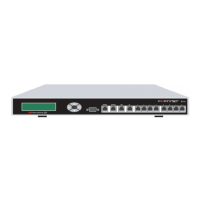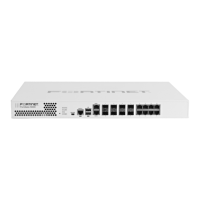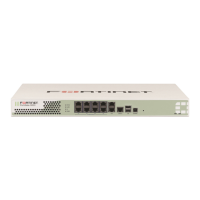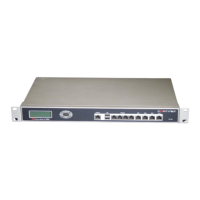IPSec VPN Manual Key
FortiGate Version 4.0 MR1 Administration Guide
01-410-89802-20090903 623
http://docs.fortinet.com/ • Feedback
To specify manual keys for creating a tunnel, go to VPN > IPSEC > Manual Key and
select Create New.
Figure 383: New Manual Key
Name Type a name for the VPN tunnel. The maximum name length is 15 characters
for an interface mode VPN, 35 characters for a policy-based VPN.
Local SPI Type a hexadecimal number (up to 8 characters, 0-9, a-f) that represents the
SA that handles outbound traffic on the local FortiGate unit. The valid range is
from 0x100 to 0xffffffff. This value must match the Remote SPI value in
the manual key configuration at the remote peer.
Remote SPI Type a hexadecimal number (up to 8 characters, 0-9, a-f) that represents the
SA that handles inbound traffic on the local FortiGate unit. The valid range is
from 0x100 to 0xffffffff. This value must match the Local SPI value in
the manual key configuration at the remote peer.
Remote Gateway Type the IP address of the public interface to the remote peer. The address
identifies the recipient of ESP datagrams.
Local Interface This option is available in NAT/Route mode only. Select the name of the
interface to which the IPSec tunnel will be bound. The FortiGate unit obtains
the IP address of the interface from the network interface settings. For more
information, see “Configuring interfaces” on page 177.
Encryption
Algorithm
Select one of the following symmetric-key encryption algorithms:
DES — Digital Encryption Standard, a 64-bit block algorithm that uses a 56-
bit key.
3DES — Triple-DES, in which plain text is encrypted three times by three
keys.
AES128 — a 128-bit block Cipher Block Chaining (CBC) algorithm that uses
a 128-bit key.
AES192 — a 128-bit block Cipher Block Chaining (CBC) algorithm that uses
a 192-bit key.
AES256 — a 128-bit block Cipher Block Chaining (CBC) algorithm that uses
a 256-bit key.
Note: The algorithms for encryption and authentication cannot both be NULL.
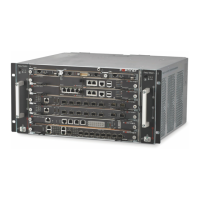
